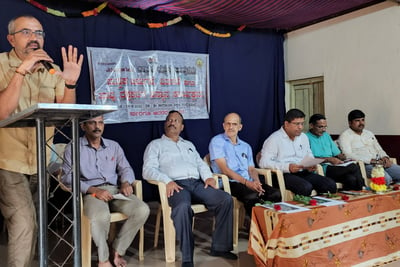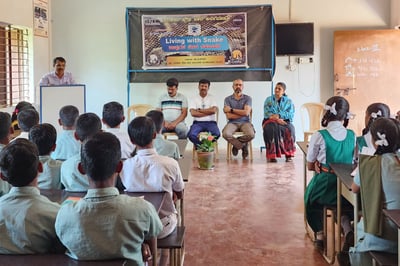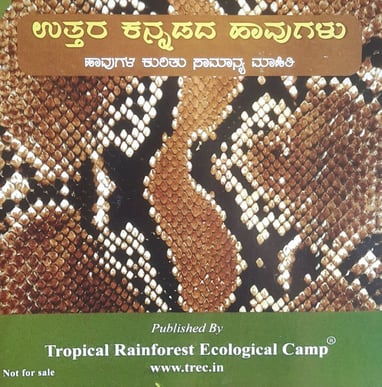Living with Snakes: A Guide to Coexistence
In the lush wilderness of our planet, a silent, slithering predator plays a crucial role in maintaining nature's delicate balance. Snakes, often misunderstood and feared, are far more than just scaly reptiles – they're essential ecosystem engineers, keeping rodent populations in check and contributing to the intricate web of life. But as human settlements continue to expand into their natural habitats, conflicts between these fascinating creatures and people are becoming increasingly common.
Team TREC
10/2/20246 min read
The Tropical Rainforest Ecological Camp (TREC), an organization dedicated to environmental issues that has been fostering harmony between humans and wildlife. Their ground-breaking project, "Living with Snakes," aims to shed light on these misunderstood creatures and pave the way for peaceful coexistence. Let's slither into the world of snakes and discover how we can live alongside these remarkable reptiles.
Demystifying the Serpent: Snake Awareness
Picture this: You're strolling through your garden when suddenly, you spot a snake basking in the sun. Your heart races, your palms sweat – but is this fear justified? More often than not, the answer is a resounding "no."
TREC's educational programs aim to dispel the cloud of myths surrounding snakes. Did you know that out of the 3,500 known snake species worldwide, only about 600 are venomous? Of those, only a handful pose any significant threat to humans. You can react appropriately and calmly during encounters by learning to identify common snake species in your area.
But snake awareness goes beyond mere identification. It's about understanding their behavior, habitat preferences, and their vital role in maintaining ecological balance. For instance, a single rat snake can consume up to 100 rodents a year – talk about a natural pest control service!
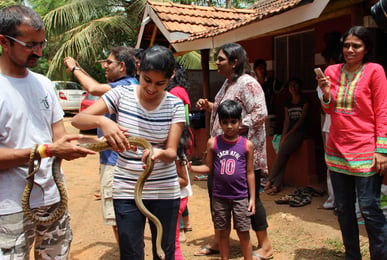

When Worlds Collide: Navigating Human-Snake Conflicts
As urban areas expand and wild spaces shrink, encounters between humans and snakes are becoming more frequent. These encounters often end tragically – for the snake. Many people's first instinct upon seeing a snake is to kill it, but this knee-jerk reaction is not only unnecessary but also harmful to our ecosystems.
TREC works tirelessly to address these conflicts by providing comprehensive education and training to local communities. They teach safe handling techniques for those brave souls willing to relocate a snake, and more importantly, they emphasize prevention strategies to minimize the likelihood of encounters in the first place.
Simple measures like keeping your yard free of debris, sealing entry points to your home, and avoiding the use of harmful pesticides can go a long way in reducing snake encounters. Remember, snakes are generally shy creatures that prefer to avoid humans – they're not out to get you!
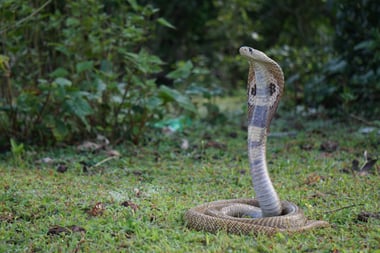

Coexistence: It's Easier Than You Think
Living harmoniously with snakes isn't just a lofty ideal – it's a practical necessity for maintaining healthy ecosystems. TREC promotes sustainable practices that encourage coexistence, such as creating wildlife corridors and preserving natural habitats.
Imagine a world where your backyard is a miniature wildlife sanctuary, with native plants attracting a diverse array of creatures, including snakes. Far from being a nightmare, this scenario can actually reduce the likelihood of problematic encounters. Snakes in their natural habitat are less likely to venture into human-dominated spaces in search of food or shelter.


The Art of Snake Identification: A Lifesaving Skill
One of the most crucial skills TREC imparts is the ability to distinguish between venomous and non-venomous snakes. In many regions, only a small percentage of snake species are venomous, and learning to identify them can literally be a lifesaver.
For example, some snake species have similar coloring, but there are key differences in head shape, pupil shape, and behavior that can help you tell them apart. TREC's workshops dive deep into these distinguishing features, empowering individuals to make informed decisions during snake encounters.
Our published guidebook “Snakes of Uttara Kannada” written in Kannada language has made a big impact by educating the public regarding snake identification, habitats, behavior, diet, activity, and venomous nature. The guidebook helped minimize man-snake conflicts by raising awareness about the diverse snake species found in the region. It also helped local communities to understand and respond appropriately to snake encounters, reducing fear and preventing unnecessary harm to both humans and snakes. The book served as a guide for local rescuers, students, reptile researchers, and nature enthusiasts.
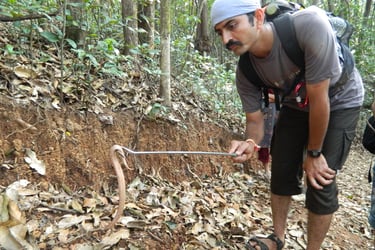

Understanding Our Scaly Neighbors: Habitat and Behavior
To truly coexist with snakes, we need to understand their world. TREC's educational programs delve into the fascinating lives of these reptiles. Did you know that snakes are ectothermic, relying on external sources to regulate their body temperature? This is why you might often see them basking in the sun or seeking shelter in cool, shaded areas.
Different snake species have different habitat preferences. Some, like the arboreal green tree python, spend most of their lives in trees, while others, like the desert-dwelling sidewinder, have adapted to life in arid environments. By understanding these preferences, we can better predict where we might encounter snakes and take appropriate precautions.
When the Unexpected Happens: Snake Bite Prevention and Response
While snake bites are relatively rare, they can be serious. TREC emphasizes that prevention is key. Wearing closed-toe shoes when walking in snake-prone areas, using a flashlight at night, and staying on clear paths can significantly reduce the risk of snake bites.
But what if the worst happens? TREC provides crucial guidance on first aid measures for snake bites. The golden rule- Stay calm and seek immediate medical attention. Contrary to popular belief, techniques like sucking out the venom or applying a tourniquet are ineffective and can even be harmful.


Championing Snake Conservation: Addressing Threats and Promoting Protection
Snakes face numerous threats in our modern world. Habitat destruction, pollution, and the illegal wildlife trade are pushing many snake species to the brink of extinction. TREC works tirelessly to address these issues, advocating for the protection of snake habitats and raising awareness about the devastating impact of the illegal trade in snakes.
Did you know that the king cobra, the world's longest venomous snake, is classified as vulnerable due to habitat loss and hunting? TREC collaborates with local authorities and rescuers to implement conservation measures and protect endangered snake species like this majestic creature.
Be the Change: Community Outreach and Empowerment
At the heart of TREC's mission is the belief that community engagement is key to effective conservation. Our outreach programs go beyond mere education – we inspire and empower individuals to become advocates for snake conservation.
Imagine attending a TREC workshop where you not only learn about snakes but also get to observe them up close under the guidance of experts. These hands-on experiences can transform fear into fascination, creating a new generation of snake enthusiasts and conservationists.


The Unsung Heroes: Snake Rescuers and Their Vital Role
In the world of human-snake conflict resolution, snake rescuers are the unsung heroes. These brave individuals are often the first line of defense, safely removing snakes from human-dominated areas and relocating them to suitable habitats.
TREC supports and trains these rescuers, equipping them with the skills and tools needed to handle snakes safely. We emphasize the importance of ethical rescue practices that minimize stress to the snakes, ensuring that both the reptiles and the humans involved remain safe throughout the process.
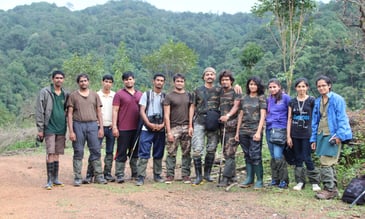

TREC: Catalyzing Change for a Snake-Friendly Future
As we've slithered through the fascinating world of snakes, one thing becomes clear: these creatures are not the villains they're often portrayed to be. They're complex, important, and often misunderstood animals that play a crucial role in our ecosystems.
TREC stands at the forefront of efforts to promote snake conservation and coexistence. Through our multifaceted approach – combining education, community outreach, rescue support, and advocacy – they're working tirelessly to create a world where humans and snakes can live side by side in harmony. By fostering understanding, respect, and coexistence, we can ensure a future where the silent slither of a snake through the undergrowth is a sound of ecological health, not a cause for alarm.
So the next time you encounter a snake, remember: it's not a monster, but a marvel of nature. With understanding and respect, we can coexist with these fascinating creatures, enriching our world and preserving the delicate balance of our ecosystems for generations to come.
